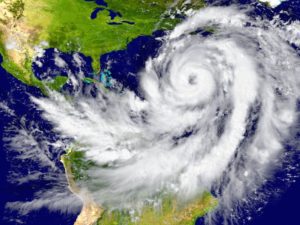As I write this post, Hurricane Matthew is bearing down on the Florida coast, scheduled to hit Cape Canaveral about 8 a.m. on Friday, Oct. 7, and Jacksonville about 12 hours later. If you’re in the path of such a storm under that kind of time crunch, it’s too late for extensive disaster recovery planning (check out this recent post for that), but it is a good idea to have a last-minute checklist to go over.
In this post, I’ll offer a few items that you may want to include on that checklist.
- Ensure access to essential, disaster-related information. I’m not talking here about all of your sensitive corporate data; hopefully you’re routinely backing that up anyway. But in a disaster situation employees need access to information such as a list of emergency contacts. The list should include the internal employees and third party vendors who they can contact for various issues during the event, such as the help desk folks who can get employees connected to the corporate VPN from wherever they may be.
Similarly, make sure employees have access to a list of all the facilities that are designated as back-up sites should primary locations be rendered unavailable. Ensure employees will be allowed access to these sites, especially IT staff who are responsible for bringing any systems back online.
- Check in with disaster recovery sites. Along the same lines, get in touch with your contacts at designated disaster recovery sites to make sure they have the capacity to handle your IT loads if need be. During an event such as a hurricane, they will likely be experiencing heavy demand; you don’t want any surprises.
- Designate an emergency operations center (EOC). An EOC, or “war room,” is a site located a reasonable, safe distance from your primary site where key personnel go to focus on the recovery effort. Make clear to all of these key personnel where the EOC is and when they are expected to leave the primary site and head to the EOC. As with all company personnel, avoid the temptation to wait till the last minute; safety should be the first priority.
- Check on generators and UPSs. While this may be a bit more than a last-minute checklist item, it’ll give you great peace of mind to know that your generators will kick in as expected if you can fire them up before you have to evacuate. Also ensure they are adequately fueled. Similarly, check on your UPSs and make sure there are no blinking red lights or other tell-tale signs of a failed battery. (As this post recently made clear, even if you can’t replace the failed battery right away, taking it offline will help preserve the life of other batteries in the string.)
If you’re not in the immediate path of Matthew, then you may want to take the time to check out this previous post with some hurricane disaster preparedness advice. Another good source is the free Schneider Electric white paper no. 5, “A Practical Guide to Disaster Avoidance in Mission-Critical Facilities.”
Stay safe.
